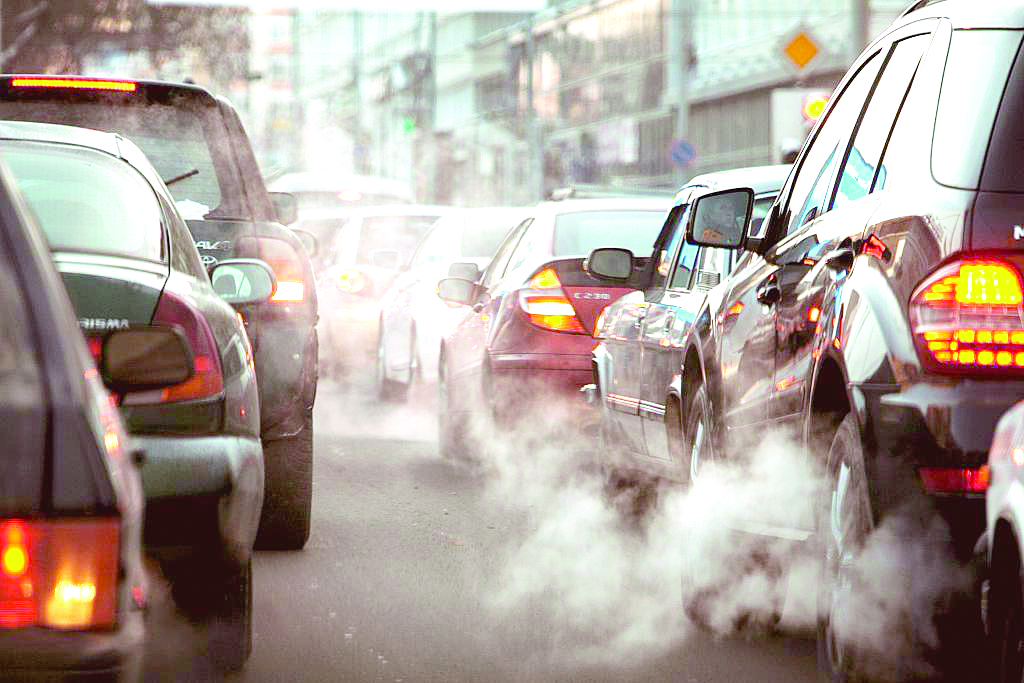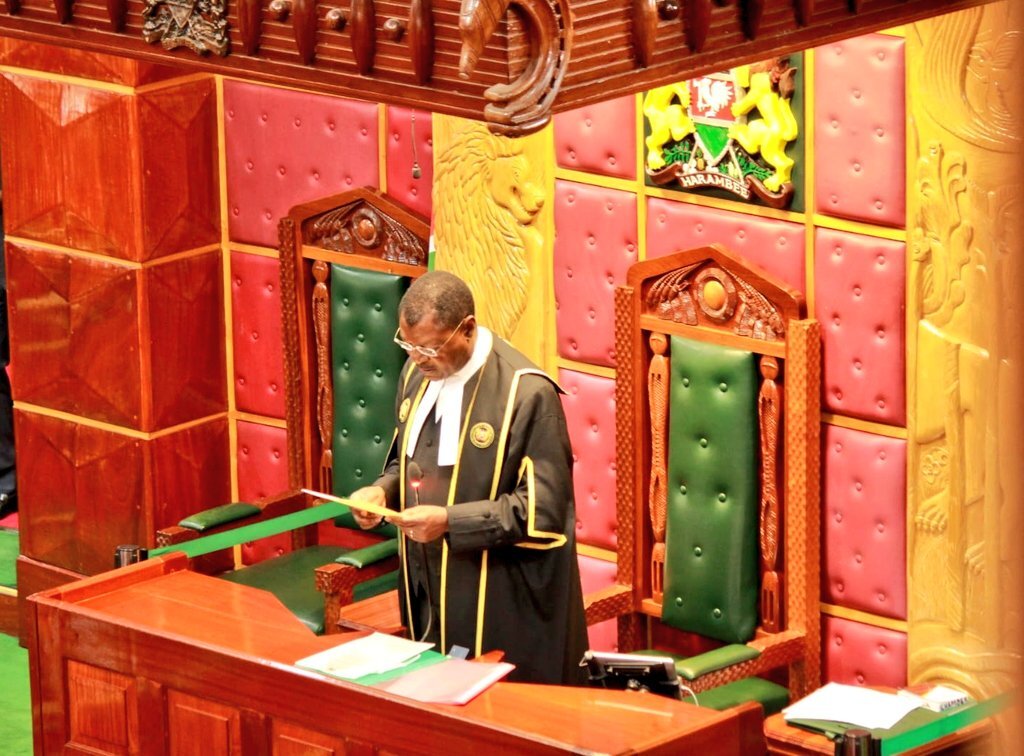As the World marks its 50th World Environment Day today, the ambitious goal to end environmental pollution appears to be a far-fetched dream with close to zero chances of being realised.
Despite efforts to get rid of environmental menace, 90 per cent of the world’s population breathes air that is polluted beyond World Health Organisation’s (WHO)targets.
While some people know the clear effects of environmental pollution, it is impossible for them to separate themselves from such surroundings.
For Amos Wasike, his relocation to Nairobi was an attempt to escape from a polluted working environment, only to land in a more polluted environment.
In 2019, Wasike moved from Kericho where he had been working in a flower farm to Nairobi, with a hope of landing himself a safer working place.
“Working in a flower farm had its challenges such as chemicals, which then made me always wear a mask for protection. I got tired of that environment and realised I needed a new environment where all this was not necessary,” he says.
But his moving was more like jumping straight into the fire since he landed a job within a more polluted area.
Air Pollution
Wasike is a street vendor along Mombasa Road, one of the major highways in Kenya. He sells soft drinks, sweets, and snacks at a bus stop where the air is fully polluted with exhaust fumes from passing vehicles. Next to him are food kiosks, which use firewood and charcoal to prepare their food, adding more pollution to the air he breathes. The area also experiences noise pollution from the honking of horns from vehicles and constant traffic, which makes it difficult to communicate effectively even with his customers.
But despite all these challenges, Wasike cannot afford to move away from this place again in search of a cleaner environment because this is where he gets his daily bread.
“Sometimes I am forced to wear a face mask to protect myself, but most of the time I am without a mask. Though I would like to stop working in such a polluted environment, I cannot because this business is where I earn a living. Apart from that, getting a less polluted area where a business can thrive is challenging,” he says.
Alice Mutuku,another roadside vendor says she has been experiencing some health issues but it has never crossed her mind that they might have been caused by her working conditions. “Day in and day out, I have been experiencing severe colds, and chest infections, but I cannot say that it is because of working in a polluted environment. I think it is due to being exposed to the morning cold for long and also prolonged exposure to biomass fuel,” she says.
While millions of Kenyans, especially street vendors face one or more forms of pollution every day, many have limited understanding on air pollution and its impact especially on their health.
Glaring dangers
According to Maurice Kavai, Deputy Director, Air Quality and Climate Change Nairobi County Government, most of these health complications vendors are experiencing are due to continuous exposure to polluted air from several sources, which include traffic or automotive emissions, dust from unpaved roads, construction sites, industrial processes, and biomass fuel.
“Though outdoor air pollution affects everyone, women are the most affected because they dominate the informal trading sector. Available research shows that using biomass fuels often and being exposed to air pollution from traffic increases the chance of negative reproductive challenges on women,” he says.
According to WHO, the health effects of air pollution are so serious that a third of deaths from stroke, lung cancer, and heart disease are due to air pollution. Its effects are equivalent to those of smoking tobacco.
WHO’s recent research shows that breathing air is becoming dangerously polluted with nine out of 10 people breathing polluted air. Exposure to polluted air in both the ambient environment and in the household causes about seven million premature deaths each year.
“Pollutants can be physical, chemical, or biological, but the pollutants of concern are particulate matter also known as PM2.5 and PM10, ozone, carbon monoxide, sulfur dioxide, nitrogen dioxide, lead, and greenhouse gases. Particulate matter is the main pollutant. These tiny particles come from many sources, including burning fossil fuels for lighting and transportation, chemicals in mines, burning garbage in open areas, burning forests and fields, using indoor stoves as well as heating oil,” says Kavai.
Despite its effects, WHO says no one is safe from the polluted environment including those residing in wealthy neighborhoods, which ideally, are considered to have a clean environment. Microscopic pollutants in the air can slip past our body’s defenses, penetrating deep into our respiratory and circulatory system, and damaging our lungs, heart, and brain.
“Air pollution is a major environmental health threat globally. It is because of it that in Kenya we are losing about 27,000 people annually. Another health effect of air pollution is that it has reduced life expectancy by 1.6 years,” says George Mwaniki, Head of air quality at the World Resources Institute Africa.
According to Mwaniki, despite these horrifying statistics, there is little focus on this public health crisis by both the governments and other health players. The reason is, unlike other sources of pollution, which are visible and kill fast, this one is not visible and kills slowly. Apart from that, polluted air has no smell and most people think that bad odour is what can be considered as air pollution.
“In Nairobi for example concentration of particulate matter in the air is five times higher than the recommended levels by WHO, which is five microgrammes per cubic metre. Though data is there to show how bad the situation is, nothing has been done,” adds Mwaniki.
According to Dr Paul Njogu, Nairobi Air Research and Data Committee Chair, Kenya’s ambient air pollution (air pollution in outdoor environments) continues to worsen even though there are various air pollution standards such as Air Quality Regulation 2014, Nairobi City County Air Quality Act among others that exist to enhance the quality of ambient air for the sake of securing an environment that is not harmful to the health and well-being of people.
Respiratory infections
“What is happening in Kenya is happening because of investment gaps and not policy gaps. Technologies to measure air quality are there, but limited resources hinder the country from buying these technologies. That is why this country continues to suffer from lack of data and thus fewer interventions,” reveals Njogu.
Sammy Simiyu from Vital Strategies and a Public Health Specialist at Nairobi Metropolitan Services says poor air quality has doubled up cases of upper respiratory tract infections in Nairobi County for the last four years; from 379,250 in 2017 to 768,415 in 2021.
Apart from the higher rates of infections, air pollution is also among the top five risk factors for death.
According to Simiyu about 124 deaths in every 100,000 are due to air pollution. Also, about 22 per cent of neonatal deaths are caused by air pollution. The menace has long term effects on human health such as cancer risks, central nervous system diseases, cardiovascular diseases as well as some impacts on one’s liver. Pollution further has effects on the human’s reproductive system as it is likely to cause fertility problems, miscarriage among pregnant women, slow foetal growth, premature birth and also low birth weight. According to the expert, short term effects include frequent headaches, coughing, pneumonia, bronchitis and even skin irritation.
“This is why we need to prioritize clean air action for health. We need to identify and address leading air pollution sources. This will be possible if we invest in prevention rather than cure,” said Simiyu.
He says people need to know that air pollution affects all other body organs and not only the respiratory system. Air pollution also affects health throughout life.
Purity Munyambu, Gender Specialist at World Resources Institute, Africa says that government policies and effective enforcement are critical. However, air pollution mitigation measures will be more sustainable, equitable, and likely to achieve better results if gender considerations are included throughout the planning and implementation stages.



















